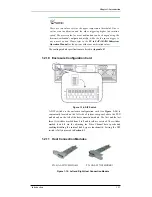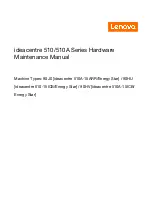
Chapter 1: Introduction
Introduction
1-5
factory default, the
Controller A
is the primary controller and the
Controller B
is the secondary controller that can be recognized by
the management tools such as LCD panel, hyper terminal and
RAIDWatch manager.
NOTE:
If the primary controller (controller A) should fail for any reason
(hardware error, software error, removal from system, etc.), the
secondary controller (controller B) will take over and become the new
primary controller.
If the original, failed primary controller (controller A) restarts and
successfully returns to service, it will become the new secondary
controller.
•
BBUs:
Two (2) independent BBUs sustain cache memory during a
power shortage to prevent data loss. (See
Section 1.2.7
.)
•
PSUs:
The hot-swappable PSUs provide power to the subsystem.
A power switch is located on the right of each PSU to turn the
system on and off. (See
Section 1.2.8
.)
•
Cooling modules:
The redundant cooling modules provide
ventilation to reduce the temperature within the subsystem. (See
Section 1.2.9
.)
•
Enclosure configuration card:
The enclosure configuration card
houses a DIP switch that controls some of the system
functionalities. (See
Section 1.2.10
.)
•
Host connection modules:
Each host connection module contains
two (2) FC ports to connect the subsystem to the host(s) and/or
daisy-chain A16F-R2422 subsystems. (See
Section 1.2.11
.)
1.1.2.6 Backplane
Board
Internal backplane boards separate the front and rear sections of the A16F-
R2422. The PCB board provides logic level signals and low voltage power
paths. They contain no user-serviceable components.
1.2 A16F-R2422 Components
The A16F-R2422 houses many active components and most of them can be
accessed through either the front or rear panel. The modular design of the
active components facilitates their easy installation and removal. Hot-swap
mechanisms are incorporated to eliminate power surges and signal glitches
















































